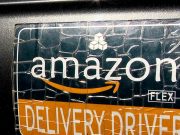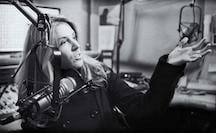
“How-To” Produce an Engaging Pod with Tina Nole
During the Summer solstice of 2015, a presidential motorcade carrying the leader of the free world turned into a residential driveway in Highland Park, California. Far from the Oval Office, and several exits away from a Hollywood sound stage or commercial radio station,

Emerging from his stretch limo with a Secret Service contingent, the POTUS was greeted not by a crowd, but by a media production crew of one: the composite personage of on-air-talent-writer-director-&-sound-engineer better known as comedian-actor Marc Maron. President and producer then entered the inner sanctum of what was once a shed-like garage. The “chat-shack” turned-podcasting-studio was home to the wildly popular podcast irreverently titled WTF.

In its first three years, the twice-weekly WTF podcast had created a new media sensation by producing an anthology of American comedy, interviewing nearly every living practitioner of the craft, from Mel Brooks and Carl Reiner to Robin Williams, and a veritable “Who’s Who” of comedy’s Hall of Fame. An oral tradition had been created.
Reagan had stood at the Berlin Wall. Nixon had gone to China. Obama had come to a garage in Southern California to speak to millennials through a narrow-casted channel that had taken the world by storm.
Blazing the Podcast Trail

Podcasting’s original trailblazers,
Just as Apple’s iTunes had transformed the music industry, the same digital MP3 format could make verbal audio content available on demand, if only you knew where to find it. In June 2005, Apple added a podcasting directory to iTunes. Virtually overnight, a new breed of audience member — a listener, follower, and intimate devotee — was born, subscribing to more than one million podcasts in the first two days.
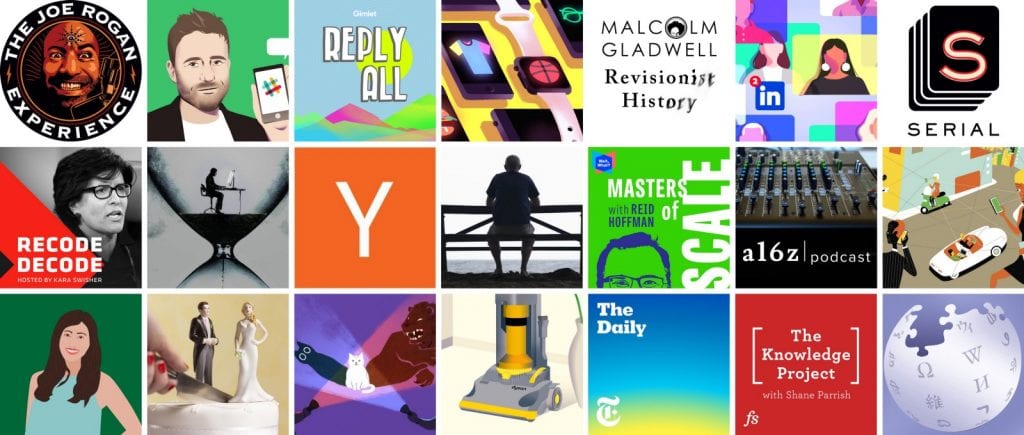
Among the early standouts were The Ricky Gervais show, the first major podcast to charge consumers to download the show at 95 pence per half-hour episode. The Adam Carolla Show began as a regular weekday podcast in March 2009 and by March 2011, 59.6 million podcasts had been downloaded, breaking Ricky Gervais previous world record.
Spanning a panoply of shows, from interviews to news, reviews, how-to’s, panel discussions, game shows, serialized docu-dramas (like “Serial”), and proving that “riches in niches” work in audio just as well as in Web pixels, today podcasting is in its heyday, even while the industry at large is in its infancy.
Before the Obama show could be air-lifted into cyberspace where it would almost certainly go viral, it had to be mind-mapped— planned,
The Producer’s Producer
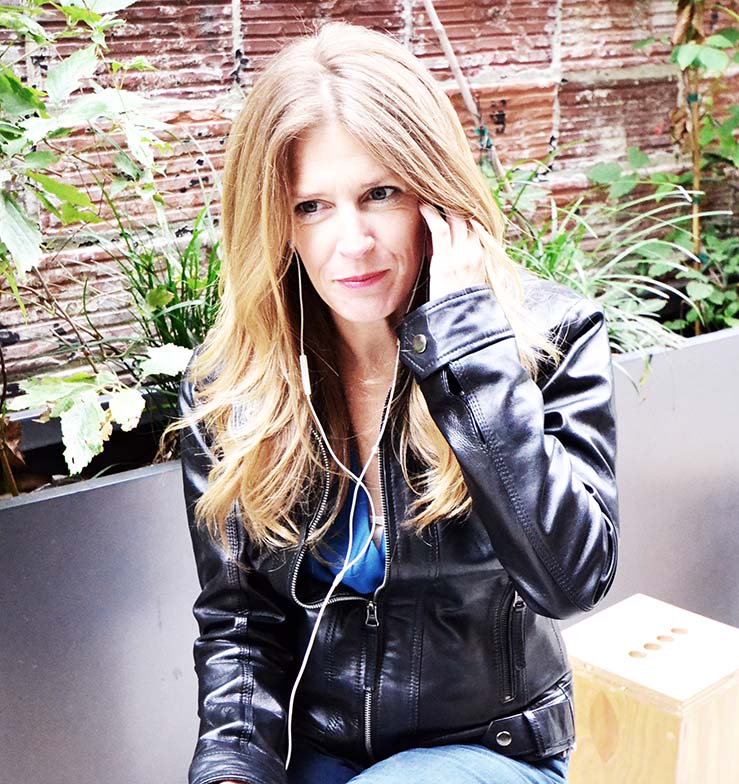
Tina Nole
For this “How-To” interview, we corralled a “Producer’s Producer.” The founder of Larj Media, Tina Nole began her career in broadcast radio, putting shows on the airwaves as an Executive Producer at Air America, as a Long Form Producer at CBS News, an Executive Producer for Peter Greenberg, Seattle radio host Dave Ross, Ron Reagan (Jr.), Gil Gross, Charles Jaco, Harry Shearer, and the CBS News Radio Network, to name but a few.
Tina then turned her attention to Internet domains shepherding outstanding content to the Web as pods. At Larj Media, Tina also leads podcasting workshops for a fortunate few. With this interview, podcasting class is now in session…
Seattle24x7: Tina, your career has followed an extraordinary arc. Has podcasting traced an evolutionary path from radio, or is it a new species entirely?

Tina Nole: It is vital to understand how and why podcasting is NOT radio! They are different mediums and must be approached in very different ways. Podcasting is far more intimate than radio.
Think about it from a listener’s perspective. When listening to the radio, you are usually at arm’s length. Radio is coming at you from a speaker and at a volume and an energy level that is like a megaphone.
Now think about a podcast. People primarily listen to podcasts with earbuds in their ears, which creates a much more intimate and personal experience. Listeners are able to make podcasts a part of their daily lives as a listening habit, on a commute, while exercising, walking the dog, or at bedtime. The podcast host has become a more integral part of their lives.
Seattle24x7: As a producer, you are an architect, or, to mix metaphors, a “quarterback” of the production. What other team members should be considered to produce a podcast? Can a podcast be a solo endeavor? Who needs to be on the team?
Tina Nole: Assembling a team can be one of the major keys to a successful podcast. The core team might have three or more people making it happen depending on the format of the show. For instance, a straight interview podcast that might have two people talking can be done with a relatively small team: a producer, an editor, and a sound engineer. For a more elaborate show, the team may also include segment producers, editors, writers, researchers, project coordinators, reporters, and others.
During production, most shows will go through several rounds of revisions. It’s helpful to have people from the production team be listening to things before they go out the door – fresh ears are essential for a good final product.

That said, a podcast can be done alone, provided you have a lot of time on your hands. There are plenty of shows that begin with an individual who has an idea, a microphone, and some inspiration. What is
Seattle24x7: In that case, what is the first question a potential podcaster should ask themselves about whether they’ve got what it takes and are willing to make the commitment to make a go of it?
Tina Nole: When people come to us for help getting started with a podcast, we will ask them three questions: 1.) What do you want to say? 2.) Who do you want to hear it? And 3.) What do you want to come of it?
This will truly inform the how and what of your podcast. Really dig into the “What do you want to come of it?” This is essential because if your goal is to make money vs. to share a message or to educate an audience, your execution is going to be very different.
Seattle24x7: Is there a particular kind of personality that makes for a good podcaster?
Tina Nole
Seattle24x7: Generally speaking, what are the key ingredients for a successful podcast “recipe?”
Tina Nole: My recipe is equal parts great production, awesome ideas with
Where to Host Your Podcast
Libsyn. Libsyn is one of the first podcast hosting sites (est 2004.) It hosts over 25,000 shows with 44 million monthly audience members. They provide everything your podcast needs, including publishing tools, media hosting
PodBean. PodBean also offers Crowdfunding options for those looking to make some recurring revenue from listeners. Monthly storage ranges between 100MB and Unlimited with the option to host video as well.
Pricing: $3 to $79 per month
BuzzSprout.
BuzzSprout offers between 2 hours uploaded monthly under
their free plan, and 12 hours
under all of their paid plans.
Pricing: $0 to $24 per month.
Blubrry. SoundCloud. PodOmatic. Spreaker. BlogTalkRadio.
Seattle24x7: Do podcasts work better as duets (with a partner or sidekick) or as ensemble casts compared to a single announcer’s narrative — plus guests?
Tina Nole: As long as the content is unique, interesting, informative and entertaining it can be done with one or two hosts, plus or minus guests. Roman Mars does a wonderful show I love called Memory Palace, it’s just him and the writing is so great and his delivery is sincere, I just love it. I also think Steve Almond and Cheryl Strayed, hosts of the Dear Sugars podcast were a great compliment to one another each bringing a different perspective, sometimes complementary, sometimes conflicting, but always raising the quality of the conversation. All in
Seattle24x7
Tina Nole: I think the best ones do. We record a lot of what we do in the field and I find that it’s much more interesting than just being in a studio. That said, a thoughtful, intelligent, honest conversation between two people behind a quality microphone can be very compelling.
Podcasting “How-To”: Find Your Niche
Explore your topic in the blogosphere and Twitter-verse, by search term and hashtag.
Is there an audience for what you want to talk about? An online community? A discussion group? Seek it out for subscribers and backlinks! Will you create a companion Website, blog or feed? How can you spin the subject to make it of particular interest?
Seattle24x7
Tina Nole: The podcasting game is all about building an engaged audience or following and that comes over time. So I wouldn’t recommend a “one-and-done” sort of approach. If you want audience feedback, I suggest asking friends and family who you trust to listen and give that feedback. Then launch with an Episode zero (or a trailer episode) and have Episode 1 already available for your listener. The hope here is that they then subscribe to the show because they like what’s there and will expect more.
Seattle24x7
Tina Nole: There doesn’t necessarily have to be a relationship between the creation of the show and the publishing schedule unless the content is news driven, or covering a specific event in time, like a sports season or a big trial. Podcasts that are news-based, or dependent on a timeline or event will drive their own publication schedule and that is more often than not a weekly cadence. For example, our show Seattle Kitchen airs weekends on KIRO Radio, so we tend to cover timely things like recipes and meal plans using foods that are in season or holiday related topics.
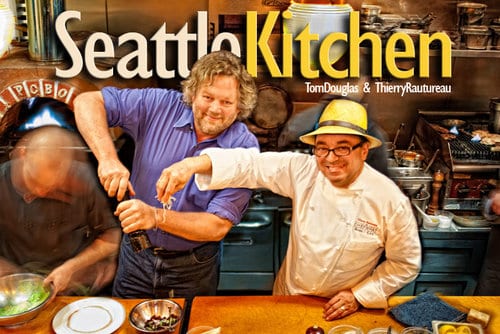
Binge behavior is a little bit circumstantial and some shows lend themselves to it more than others. Serial Season 3 was released all at once, and that was a smart move because that show was such a rich and engrossing story that it lent itself perfectly to binge listening, which created its own buzz. Podcasts that tell stories, like Heavy Weight by Gimlet Media, are great for binge listening as well, although they release each episode weekly, it’s not hard to listen to 3 or 4 episodes in a row.
Marketing can also be a driver when it comes to determining a publication schedule. We often create as much as half a season before we begin publishing, then we tease the new episodes each week to build
There are some aspects of binge listening – I binged the podcast Serial and I have friends who did the same – it was SO GOOD. I also tend to listen to more than one episode of a show I really like if I am doing something like going on a road trip, etc.
Seattle24x7: You have blogged about the “network effect” of building a podcast audience. For instance, if you have ten listeners and each of them tells 10 other people about the podcast, a “multiplier” effect can occur? Is this kind of word-of-mouth referral system, the best way to promote a podcast?
Tina Nole: The network effect is powerful in niche audiences and specific communities who seek very nuanced discussions from highly credible sources. If you have a podcast about wood carving, having 100 listeners who are passionate about wood carving are far more valuable to you than 3000 general listeners. That’s where the network effect becomes powerful.
Seattle24x7: What other methods can you recommend for building interest and “earballs” for a pod?
Tina Nole:
Seattle24x7: What do you advise your clients, and students, about the startup investment that is required for podcasting in terms of costs, tools and time?
Tina Nole: This really varies depending on what type of show you want to create. My philosophy on this is that if you’re going to ask me (your audience) to put your voice in my ears for a half hour a week, week after week, you better respect me enough to put the time and energy in to make it sound great – that means good audio quality and diligence when it comes to editing.
Podcasting “How-To
Try to get them to tell you a story” : Interview Tips
Don’t ask yes or no questions
Keep tape rolling! Before you ask the first question and keep it rolling until you’re
well out the door
Do NOT give vocal affirmation if you’re trying to get a clean interview – justshake your head – don’t say “uh hu” etc…
Leave time for pauses – no matter how uncomfortable
Know your guest! Do your research!
You can find very good recording equipment
We custom bid all our projects because there are so many variables that go into level of effort. Podcasts tend to be less expensive than video because the equipment is simpler and the production itself is very nimble. That said, it’s not hard to hear the difference between good equipment and bad.
Podcasting “How-To”: Digital Audio Workstations
While there are professional recording studios like LarjMedia, you can also create your own studio in-house. Licenses for professional level Digital Audio Workstations (or DAWs) like Reason or Pro Tools can cost anywhere between $300 and $900. Apps like Hindenburg offer simpler audio editing software for under $100, Reaper is a fully loaded audio production app for $60, and Adobe’s audio editing software Audition CC is available with a $19.99 monthly subscription, but you probably shouldn’t start dumping money into podcasting software if you’re just starting out. Many folks recommend free open source programs like Audacity when you’re just getting started.
Seattle24x7: What are
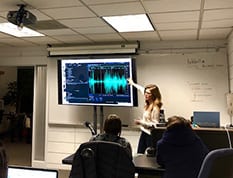
Tina Nole: I love the Zoom H4N for field recording, it’s probably my favorite piece of equipment because it’s portable, versatile and in a
Seattle24x7: Looking at the business model(s) for generating revenue from podcasting, the tiered subscription concept seems to be emerging where basic shows are free but extra-added, special content is made available to subscribers for a fee. Other “ad-free” podcasts are delivered to paying subscribers? Are these the most viable approaches for
Tina Nole: The value of a podcast is really in the power it has in branding a person, a message, a cause. While it’s tough to monetize a show, the ad model, with sponsorships is the most viable way to generate some revenue for a show. Subscriptions are coming on strong.
Seattle24x7: How important is it for podcasts to become aligned with a “network” like The Nerdist, Ear Wolf, Vox Media, Slate, or CAFE? Is this an aspirational rung on the ladder?
Tina Nole: It really depends on the show, but it can be very important. There are also lesser known networks for smaller podcasts to align with that are coming into the field all the time.
Seattle24x7: What do you see in your crystal ball for the future of podcasting?
Tina Nole: I think the branded podcast space is really growing. Personally, I’d love to see the
Larj Media produces podcasts for brands and business. For more information, visit larjmedia.com
Learn more about Larj Media Workshops at http://www.larjmedia.com/workshops






